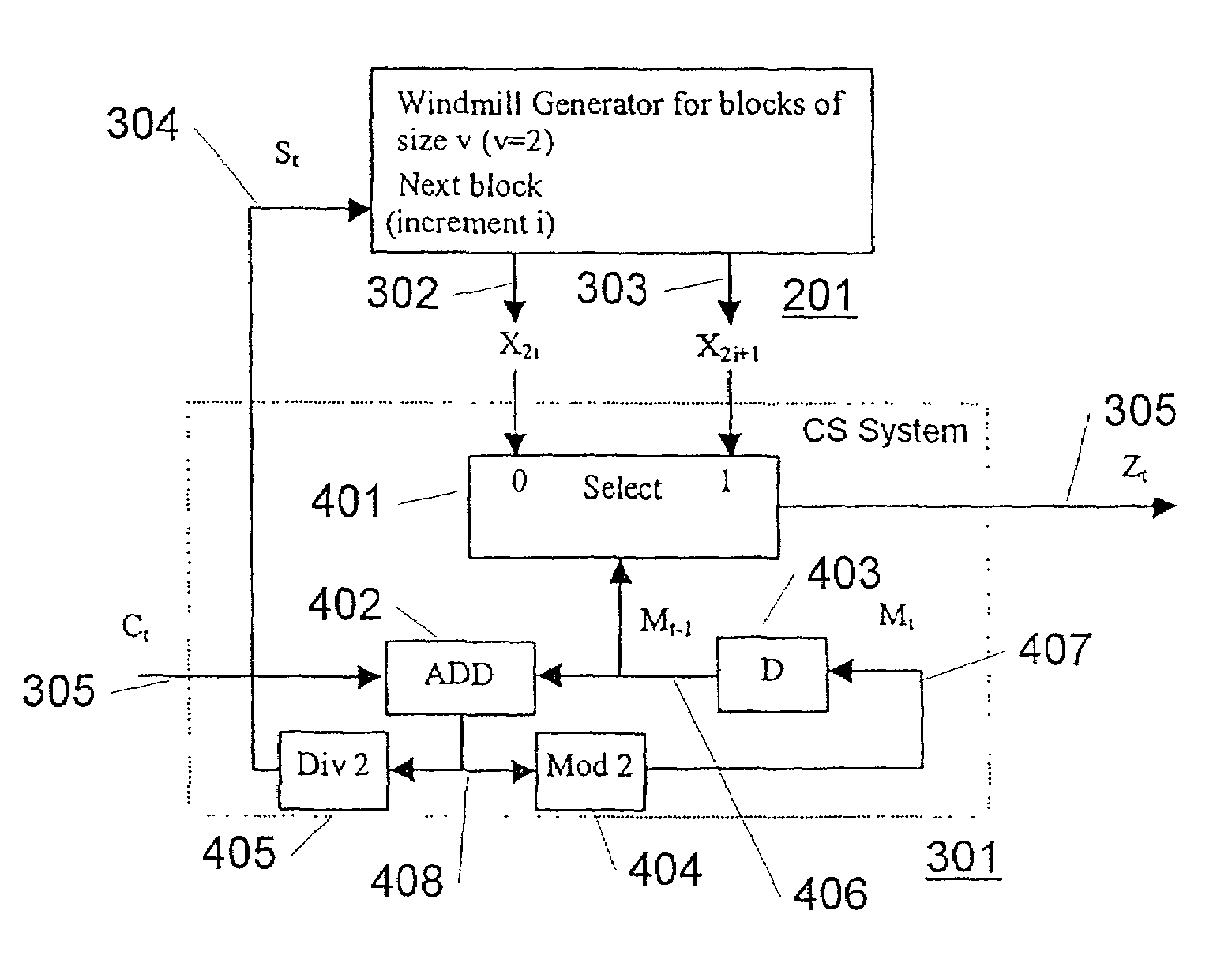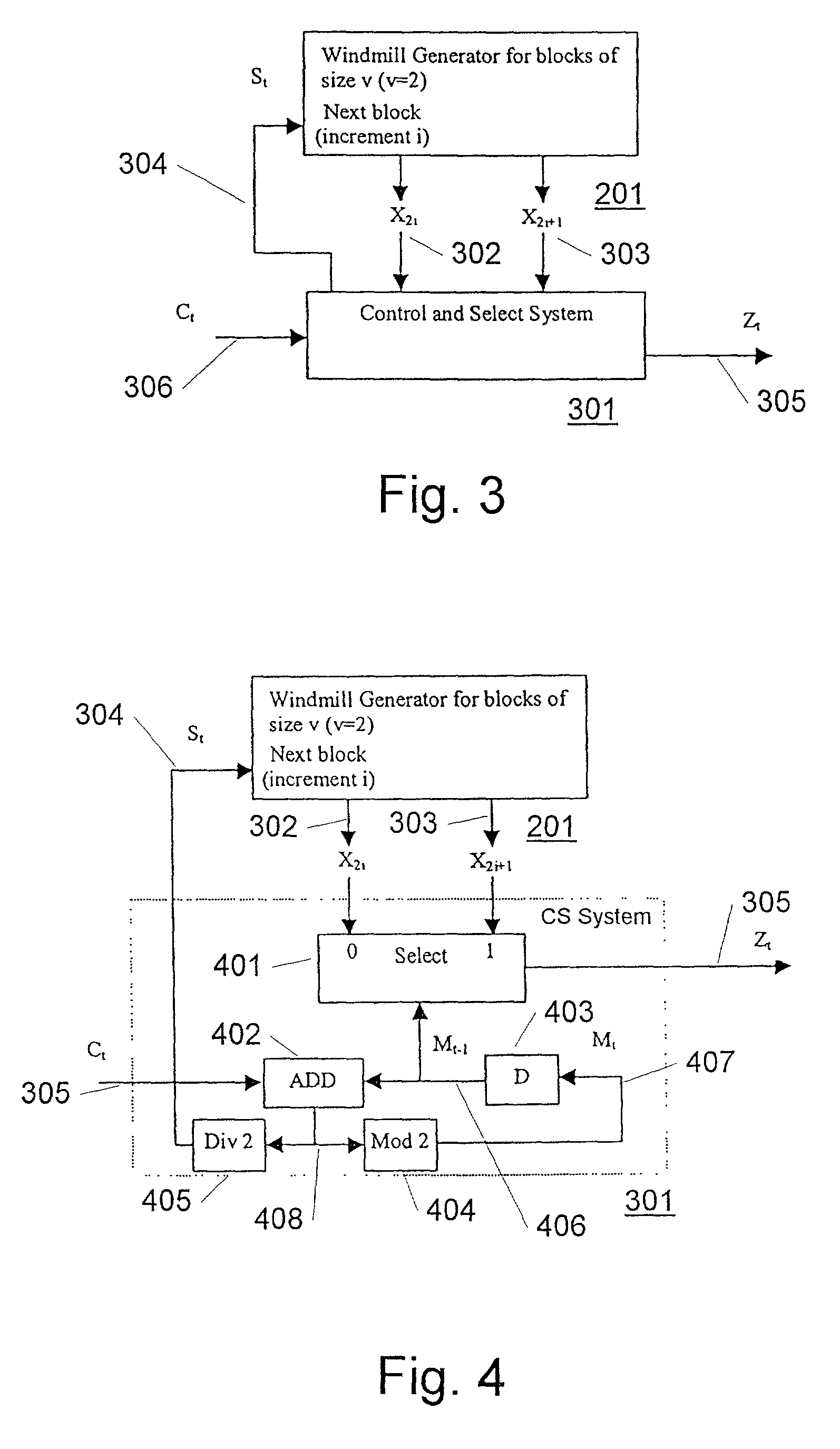Method and an electrical device for efficient generation of multi-rate pseudo random noise (PN) sequence
- Summary
- Abstract
- Description
- Claims
- Application Information
AI Technical Summary
Benefits of technology
Problems solved by technology
Method used
Image
Examples
Embodiment Construction
[0056]FIG. 1 illustrates a functional block diagram of a prior art (1,2)-step clock controlled m-sequence generator (101). This exemplary generator (101) outputs PN sequence symbols Zt (102). The generator (101) has L=5 delay elements (103) each connected to step control means (104) receiving a clock control signal Ct (105) where t denotes the time instants 0, 1, 2, . . . . In this way each element (103) is clock controlled by a sequence C=C0, C1, C2, C3, . . . , where each symbol represents the value 1 or 2, i.e. Ct ÎÎ {1,2}.
[0057]As will be seen, every value in the delay element (103) is shifted to the right at each time instant, except the value of the (from left to right) first element (103) which updates to the sum (without a carry) of the values of the second and the fifth delay elements (103) by an adding element (106).
[0058]If the m-sequence generator (101) steps once every time instant, the generator (101) will produce the simple sequence X=X0, X1, X2, X3, . . . . With the ...
PUM
 Login to View More
Login to View More Abstract
Description
Claims
Application Information
 Login to View More
Login to View More - R&D
- Intellectual Property
- Life Sciences
- Materials
- Tech Scout
- Unparalleled Data Quality
- Higher Quality Content
- 60% Fewer Hallucinations
Browse by: Latest US Patents, China's latest patents, Technical Efficacy Thesaurus, Application Domain, Technology Topic, Popular Technical Reports.
© 2025 PatSnap. All rights reserved.Legal|Privacy policy|Modern Slavery Act Transparency Statement|Sitemap|About US| Contact US: help@patsnap.com



